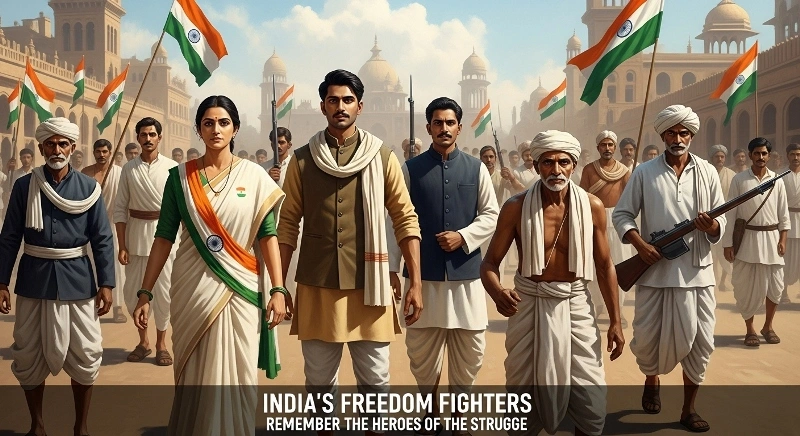India, a country of immense diversity and cultural richness, continues to grapple with one of the world’s largest poverty challenges. Despite being the world’s fifth-largest economy, India has a substantial proportion of its population living below the poverty line. Poverty in India is not just about income levels but also encompasses issues related to education, healthcare, nutrition, access to basic amenities, and social security.

India’s poverty rate, though improving over the years, remains a stark reminder of the deep-rooted inequalities that persist in the country.
According to various estimates, more than 350 million Indians live in poverty, representing a significant portion of the world’s poorest populations. While there have been strides in economic growth and development, the progress has not always translated into inclusive growth, with large sections of society remaining left behind.
Poverty in India is influenced by a complex set of factors, ranging from historical social structures and economic policies to global market forces. This article aims to delve into the causes of poverty in India, its impact on society, and the potential solutions to alleviate this persistent issue.
Table of Contents
1. Causes of Poverty in India
Unequal Distribution of Wealth: One of the primary causes of poverty in India is the unequal distribution of wealth and resources. A significant portion of India’s population is still deprived of basic necessities such as adequate food, safe drinking water, healthcare, and education. While a small percentage of the population has seen tremendous growth in wealth, the rest of the nation continues to live in poverty.
Population Growth: India’s rapid population growth has played a key role in the persistence of poverty. With an ever-growing population, the demand for basic resources and employment opportunities outpaces the country’s ability to provide them. A high population density in rural and urban areas exacerbates the problem of overcrowded living conditions, leading to increased competition for resources.
Lack of Education and Skills: Education is one of the most significant factors in determining an individual’s economic status. Lack of access to quality education and vocational training often results in individuals being unable to secure better-paying jobs. Children from poorer families are often unable to attend school due to financial constraints, which perpetuates the cycle of poverty.
Unemployment and Underemployment: The lack of adequate employment opportunities is another critical contributor to poverty in India. Even though the country’s economy has grown significantly in recent decades, job creation has not kept pace with the number of young people entering the workforce. Moreover, underemployment, where people are employed in low-paying or insecure jobs, further worsens the situation.
Agricultural Dependency: A significant portion of India’s population is dependent on agriculture for their livelihood. However, agricultural practices in India are often inefficient and outdated, and many farmers struggle to maintain a stable income due to poor infrastructure, climate change, and lack of government support.
2. This leaves millions of people trapped in a cycle of poverty.
Caste System and Social Inequality: Social structures, including the caste system, have historically contributed to economic inequalities in India. Dalits, tribal communities, and other marginalized groups have limited access to education, healthcare, and employment opportunities, which prevents them from breaking free from poverty.
Inflation and Price Rise: Inflation, especially in the prices of essential goods such as food, fuel, and healthcare, has a disproportionate effect on low-income families. As the prices of basic goods rise, the poor find it increasingly difficult to afford necessities, thus pushing them further into poverty.
Political Corruption: Corruption in political and bureaucratic systems has hampered effective implementation of welfare programs aimed at poverty alleviation. Funds meant for poverty reduction and welfare programs often do not reach the people they are intended for due to inefficiency or corruption, thereby limiting the scope of poverty eradication efforts.
Health Crises: India faces a significant burden from preventable diseases, poor sanitation, and malnutrition, all of which contribute to poverty. Lack of access to quality healthcare results in high mortality rates, especially among children, and limits economic productivity, thereby perpetuating the cycle of poverty.
Rural-Urban Divide: There is a wide disparity between urban and rural India in terms of access to resources, quality of life, and employment opportunities. Rural areas often lack basic infrastructure such as proper roads, schools, healthcare facilities, and clean water, which hinders development and exacerbates poverty.
3. Impact of Poverty on Indian Society
Health Implications: Poverty often leads to malnutrition, inadequate healthcare, and poor living conditions, contributing to a high incidence of preventable diseases. Poor health in turn limits the ability of individuals to work and earn a livelihood, creating a vicious cycle.
Educational Setback: Children from impoverished families often do not have access to quality education. This lack of education diminishes their chances of securing well-paying jobs in the future, thus perpetuating poverty across generations.
Social Inequality: Poverty exacerbates social inequalities, leading to class division and social unrest. The lack of social mobility makes it difficult for individuals to break free from the constraints of their circumstances, especially in rural areas.
Migration to Urban Areas: The growing levels of poverty in rural areas have led to an increasing migration to cities in search of better economic opportunities. This has contributed to the rise of slums, overcrowding, and poor living conditions in urban areas, straining the country’s infrastructure and resources.
Political Instability: The persistent issue of poverty can lead to political instability. Discontent among the poor often manifests in the form of protests, unrest, or even extremism. Without addressing the root causes of poverty, these social tensions are likely to continue escalating.
4. Solutions to Alleviate Poverty in India
Inclusive Economic Growth: Economic policies must focus on promoting inclusive growth, ensuring that the benefits of economic development reach all sections of society. Promoting small businesses, providing microfinancing, and supporting the informal sector are critical to creating job opportunities and reducing poverty.
Investing in Education: To break the cycle of poverty, India must invest heavily in education, particularly for marginalized communities. Ensuring access to free and quality education at all levels, as well as vocational training, can equip the youth with the skills necessary to secure sustainable employment.
Social Welfare Programs: Expanding social welfare programs like the Public Distribution System (PDS), Direct Benefit Transfers (DBT), and the National Rural Employment Guarantee Act (NREGA) can provide immediate relief to the poor and improve their access to food, healthcare, and employment opportunities.
Improved Healthcare: Access to affordable healthcare is essential for reducing poverty-related health problems. Government programs aimed at improving sanitation, immunization, and public health services will reduce the disease burden and increase the productivity of the population.
Promoting Rural Development: Focusing on rural development, by improving infrastructure, promoting rural industries, and enhancing agricultural practices, can significantly reduce rural poverty. Providing subsidies for farmers and improving agricultural technology can enhance agricultural productivity and income.
Empowerment of Women: Women’s empowerment is a key factor in tackling poverty. Providing women with access to education, financial resources, and decision-making power can have a transformative impact on families and communities, lifting them out of poverty.
Reducing Income Inequality: Policies that aim to reduce income inequality, such as progressive taxation, land reforms, and fair wages, can ensure that the wealth generated by the economy is more equitably distributed.
Job Creation and Skill Development: Focused efforts to generate jobs through public works, industrial growth, and entrepreneurship are essential. Skill development initiatives for the youth can ensure they are equipped with the knowledge needed to compete in the job market.
Sustainable Development: Sustainable development that integrates economic, social, and environmental goals is crucial for long-term poverty eradication. By addressing issues like climate change, the depletion of natural resources, and environmental degradation, we can create a more resilient society.
Good Governance and Anti-Corruption Measures: Efficient governance and anti-corruption measures are critical for ensuring that poverty alleviation programs are implemented effectively. Transparency, accountability, and the reduction of bureaucratic inefficiencies are necessary to reach those who need assistance the most.
Conclusion
Poverty in India remains a multidimensional challenge that requires comprehensive, coordinated efforts from the government, civil society, and the private sector.
While significant progress has been made over the years, much more needs to be done to ensure that the benefits of economic growth reach every individual.
By addressing the root causes of poverty, such as education, inequality, and unemployment, India can take meaningful strides toward a more prosperous, just, and inclusive future for all.






